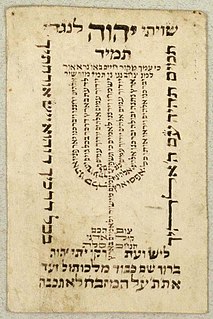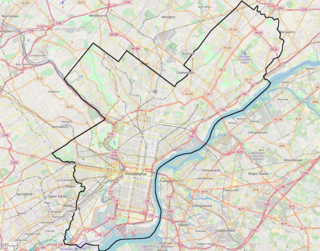 W
WThe Jerusalem Biennale, as stated on the Biennial Foundation's website, "is a platform for professional curators and artists to present contemporary works that relate, in one way or another, to the Jewish world of content. Every two years, a growing community of artists, art lovers, collectors, writers, researchers, and social activists gather in Jerusalem to celebrate Contemporary Jewish Art and to enjoy a variety of exhibitions, projects, site-specific installations and events under this conceptual framework."
 W
WBeit She'arim is the currently used name for the ancient Jewish town of Bet She'arāyim or Kfar She'arāyim, made popular by its necropolis, now known as Beit She'arim National Park. The site, located on a hill, was known initially by its Arabic name Sheikh Ibreik or Sheikh Abreik, purchased by the Jewish National Fund, and which historical geographer Samuel Klein in 1936 identified as Talmudic Beit She'arim.
 W
WBraunschweigisches Landesmuseum (BLM) is a history museum in Braunschweig, Germany, operated by the state of Lower Saxony. The museum is scattered on four locations: Vieweghaus, Hinter Ägidien, Kanzlei (Wolfenbüttel) and Bauernhausmuseum (Bortfeld).
 W
WThe Center for Jewish Art (CJA) is a research institute at the Hebrew University of Jerusalem, devoted to the documentation and research of Jewish visual culture. Established in 1979, it documented and researched objects of Jewish art in ca. 700 museums, libraries, private collections and synagogues in 41 countries. Today, the center's archives and collections constitute the largest and most comprehensive body of information on Jewish art in existence. The CJA's research and documentation is included in the Bezalel Narkiss Index of Jewish Art.
 W
WThe Dura-Europos synagogue was an ancient synagogue uncovered at Dura-Europos, Syria, in 1932. The synagogue contains a forecourt and house of assembly with painted walls depicting people and animals, and a Torah shrine in the western wall facing Jerusalem. It was built backing on to the city wall, which was important in its survival. The last phase of construction was dated by an Aramaic inscription to 244 AD, making it one of the oldest synagogues in the world. It was unique among the many ancient synagogues that have emerged from archaeological digs as the structure was preserved virtually intact, and it had extensive figurative wall-paintings, which came as a considerable surprise to scholars. These paintings are now displayed in the National Museum of Damascus.
 W
WThe ancient synagogue of Gaza was built in 508 AD during the Byzantine period and was discovered in 1965. It was located in the ancient port city of Gaza, then known as "Maiumas", currently the Rimal district of Gaza City.
 W
WGold glass or gold sandwich glass is a luxury form of glass where a decorative design in gold leaf is fused between two layers of glass. First found in Hellenistic Greece, it is especially characteristic of the Roman glass of the Late Empire in the 3rd and 4th century AD, where the gold decorated roundels of cups and other vessels were often cut out of the piece they had originally decorated and cemented to the walls of the catacombs of Rome as grave markers for the small recesses where bodies were buried. About 500 pieces of gold glass used in this way have been recovered. Complete vessels are far rarer. Many show religious imagery from Christianity, traditional Greco-Roman religion and its various cultic developments, and in a few examples Judaism. Others show portraits of their owners, and the finest are "among the most vivid portraits to survive from Early Christian times. They stare out at us with an extraordinary stern and melancholy intensity". From the 1st century AD the technique was also used for the gold colour in mosaics.
 W
WAccording to the Bible, the golden calf was an idol made by the Israelites when Moses went up to Mount Sinai. In Hebrew, the incident is known as ḥēṭ’ ha‘ēggel or the Sin of the Calf. It is first mentioned in Exodus 32:4.
 W
WThe Hamburg temple model is a Baroque architectural model of the Temple of Solomon. It covers an area of about 12 square metres (130 sq ft) and is made from wood. It is square, with four wings and nine courtyards, two of them in the central axis.
 W
WThe Hand of God, or Manus Dei in Latin, also known as Dextera domini/dei, the "right hand of God", is a motif in Jewish and Christian art, especially of the Late Antique and Early Medieval periods, when depiction of Jehovah or God the Father as a full human figure was considered unacceptable. The hand, sometimes including a portion of an arm, or ending about the wrist, is used to indicate the intervention in or approval of affairs on Earth by God, and sometimes as a subject in itself. It is an artistic metaphor that is generally not intended to indicate that a hand was physically present or seen at any subject depicted. The Hand is seen appearing from above in a fairly restricted number of narrative contexts, often in a blessing gesture, but sometimes performing an action. In later Christian works it tends to be replaced by a fully realized figure of God the Father, whose depiction had become acceptable in Western Christianity, although not in Eastern Orthodox or Jewish art. Though the hand of God has traditionally been understood as a symbol for God's intervention or approval of human affairs, it is also possible that the hand of God reflects the anthropomorphic conceptions of the deity that may have persisted in late antiquity.
 W
WI Never Saw Another Butterfly: Children's Drawings and Poems from Terezin Concentration Camp, 1942–1944 is a collection of works of art and poetry by Jewish children who lived in the concentration camp Theresienstadt. They were created at the camp in secret art classes taught by Austrian artist and educator Friedl Dicker-Brandeis. The book takes its title from a poem by Pavel Friedmann, a young man born in 1921 who was incarcerated at Theresienstadt and was later killed at Auschwitz. The works were compiled after World War II by Czech art historian Hana Volavková, the only curator of the Jewish Museum in Prague to survive the Holocaust. Where known, the fate of each young author is listed. Most died prior to the camp being liberated.
 W
WJewish ceremonial art, also known as Judaica, refers to an array of objects used by Jews for ritual purposes. Because enhancing a mitzvah by performing it with an especially beautiful object is considered a praiseworthy way of honoring God's commandments, Judaism has a long tradition of commissioning ritual objects from craftsmen and artists.
 W
WJewish paper cutting is a traditional form of Jewish folk art made by cutting figures and sentences in paper or parchment. It is connected with various customs and ceremonies, and associated with holidays and family life. Paper cuts often decorated ketubbot, Mizrahs, and ornaments for festive occasions. Paper cutting was practiced by Jewish communities in both Eastern Europe and North Africa and the Middle East for centuries and has seen a revival in modern times in Israel and elsewhere.
 W
WThe Hebrew word for 'symbol' is ot, which, in early Judaism, denoted not only a sign, but also a visible religious token of the relation between God and human.
 W
WThe Maon Synagogue is a 6th-century synagogue and archaeological site located in the Negev Desert near Kibbutz Nirim and Kibbutz Nir Oz. It is noted for its "magnificent" mosaic floor.
 W
WThe Maoz Haim Synagogue was originally constructed in the 3rd century as a simple Byzantine-era type basilica building, later apsidical, in the Beit She'an region in northern Israel. Discovered in February 1974 by Mr. A. Ya’aqobi during some unrelated digging near Maoz Haim, it stands out as an unusual archeological find that contains a record of synagogue development from a time of otherwise sparse historiography. It was even developing right through times of anti-Judaic legislation and sermonizing. The synagogue was located amongst a large settlement in which it served as a center of worship for Jews there from its beginning up through its final destruction by fire sometime in the early 7th century.
 W
WMicrography, also called microcalligraphy, is a Jewish form of calligrams developed in the 9th century, with parallels in Christianity and Islam, utilizing minute Hebrew letters to form representational, geometric and abstract designs. Colored micrography is especially distinctive because these rare artworks are customarily rendered in black and white.
 W
WThe Monheim Town Hall is a historical building in Monheim, Bavaria, southern Germany, now owned by the city's council.
 W
WSandra Moreschi is an Italian designer of Jewish ceremonial art.
 W
WDr. Ido Noy is a curator and historian of Jewish art. Noy is currently the Deputy Director and Director of Content for the Jerusalem Biennale.
 W
WThe Philadelphia Museum of Jewish Art, founded in 1975, located within historic Congregation Rodeph Shalom, is dedicated to exhibiting contemporary art that illuminates the Jewish experience. The museum has organized solo and group exhibitions of work in many mediums by artists of diverse backgrounds.
 W
WTzippori Synagogue is an ancient synagogue discovered in Sepphoris, a Roman-era Jewish city in the Galilee, now an archaeological site and a national park in Israel.
 W
W W
W